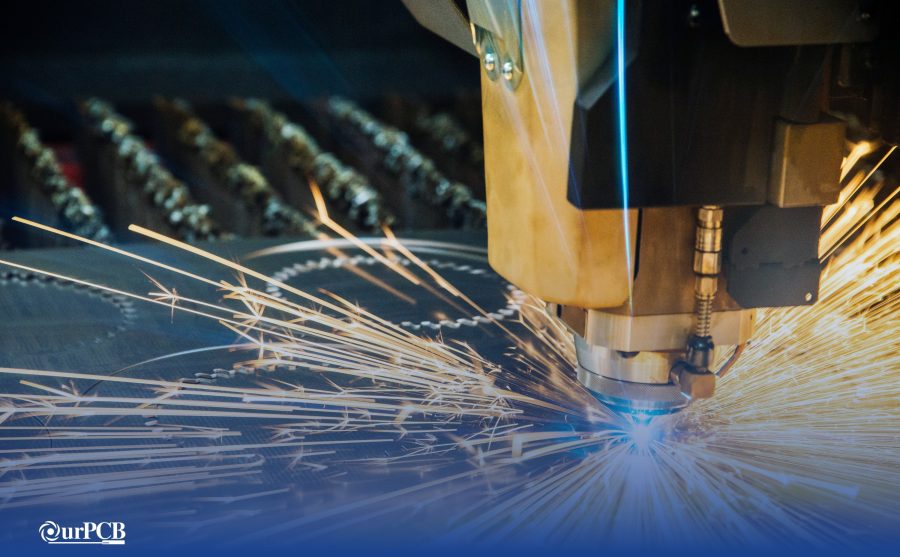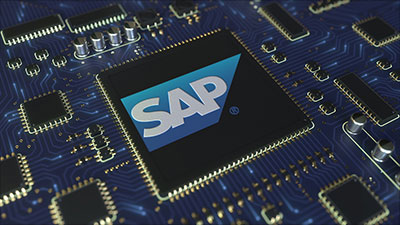AWhat are you looking to do with your Bluetooth device?
No matter how you want your Bluetooth device to function, one thing's for sure - you would like it to pair up quickly.
You want to listen to your favorite tracks while on your vacation, so what do you bring with you?
A Bluetooth speaker that can play hours of your playlists.
You want to transfer some cool selfies you have clicked to your friend's cell phone. How do you do it?
You activate the Bluetooth connection and transfer the images through the link.
The magic of Bluetooth is all around us, and all of it is accomplished by the functioning of the Bluetooth circuit boards. This article will go in-depth and give you a wholesome course on Bluetooth circuit boards and the different types, including their applications.
In the first chapter, we will briefly look at Bluetooth technology and head directly to the circuit board itself.
Contents
- Bluetooth Circuit Board
- The Principles of Bluetooth Technology
- The Principle behind Bluetooth Circuit Boards
- Components of a Bluetooth Circuit Board
- Types of Applications of Bluetooth Circuit Board
- Wireless Headsets and Earphones
- Cordless Keyboards and Mouse
- Bluetooth Speakers
- Multimedia Transfer
- Automatic Synchronization
- Bluetooth Module
- What Is the Difference Between a Bluetooth Module and a SOC?
- Bluetooth Speaker Circuit Board
- Bluetooth Transmitter Circuit Board
- Bluetooth Receiver Circuit Board
- How To Design a Bluetooth Circuit Board?
- Define your Requirements
- Pick the Bluetooth Module
- Determine the Board’s Specifications
- Design the Schematic
- Design the Board Layout
- Design the Power and Ground Planes
- Incorporate EMI and Signal Integrity
- Design the Antenna
- Test and Validate the Design
- Comply With the Industry Standards and Regulations
- How Do You Make a Bluetooth Receiver Circuit?
- Step 1: Dismantle the Speaker
- Step 2: Disconnect the Input Aux Audio Jack
- Step 3: Connect the Aux Jack to the Bluetooth Module’s Output Pins
- Step 4: Test the System
- Conclusion
Bluetooth Circuit Board
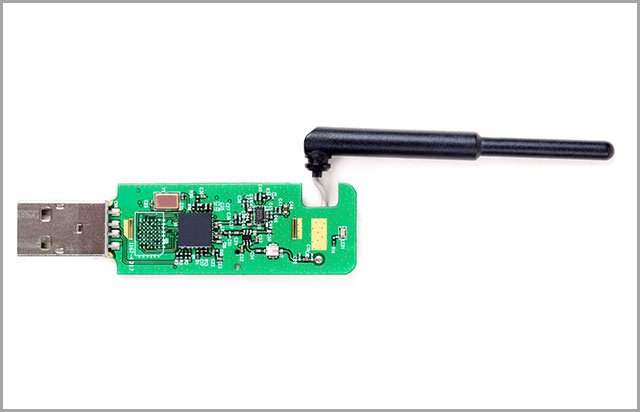
You can find the Bluetooth circuit board inside your smartphone and other Bluetooth-enabled devices. However, before we dive into the details of the Bluetooth circuit board, let us take a while and discover how Bluetooth technology works.
The Principles of Bluetooth Technology
Bluetooth is a form of communication that utilizes radio frequency to connect with different devices. It can operate at 2.4 GHz frequency and is similar to the other wireless communication forms, such as Wi-Fi.
One master Bluetooth device can remotely connect to 7 other Bluetooth-enabled devices. The paired devices exchange information serially with the master Bluetooth device. The interaction between the paired devices can be done through the master Bluetooth device, which acts as a facilitator.
Bluetooth frequencies have a range of 1 cm to 100 meters, and each connection needs approval from the devices using unique codes. Bluetooth devices can reduce energy consumption by staying idle when there is no active exchange of information.
The Bluetooth circuit boards are the main force driving wireless headsets, remote controls, wireless speakers to IoT (Internet of Things) applications. They are two-layered PCBs but have only a single plate. You will find the layers on both sides of the leaves.
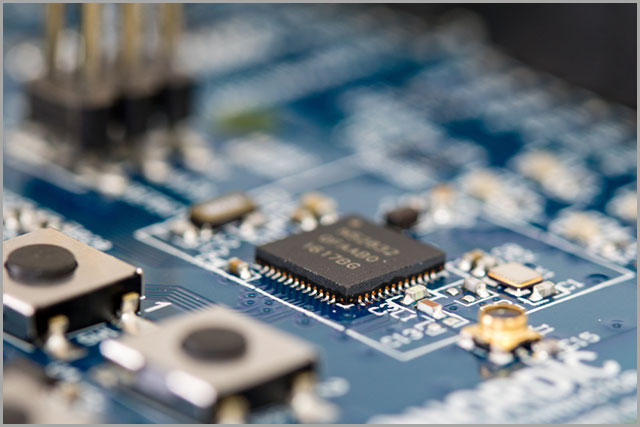
The Principle behind Bluetooth Circuit Boards
The principle behind the working of a Bluetooth circuit board is straightforward. An antenna is located on the Bluetooth PCB, which receives the signal sent out by a Bluetooth device. The message is then sent to the output after being processed inside the circuit board.
Different Bluetooth profiles are used to facilitate communication between devices based on the application of the Bluetooth device. For example, the Audio/Video Remote Control Profile (AVRCP) is used for communication with audio-video devices and found in remote controls of hi-fi equipment and TVs.
Components of a Bluetooth Circuit Board
A Bluetooth circuit board also contains a minimum of 2 inductors, which can fine-tune the antenna's impedance to improve the reception and sending of information. The modules have 4 IO pins: the State, Enabled, communication, and power supply options. You can also find multiple resistors, diodes, and capacitors placed on the Bluetooth circuit board.
Apart from the above components, other parts such as chips, voltage regulators, and the crystal-based clock can also be found. The Bluetooth circuit board requires careful attention while assembling, especially with the antennae for its proper functioning.
It is what a Bluetooth circuit board looks like
Like we have already said, Bluetooth circuit boards are found within Bluetooth-enabled devices. In the next chapter, we will explore some of the practical applications of Bluetooth circuit boards.
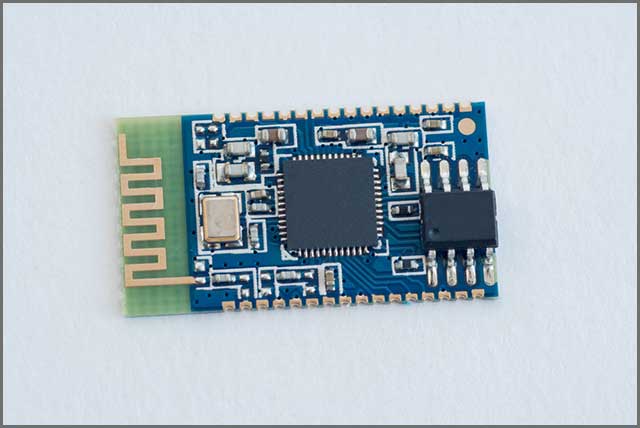 Bluetooth circuit board
Bluetooth circuit board
Types of Applications of Bluetooth Circuit Board
Bluetooth boards exist in the devices and devices we use every day without careful consideration. Anything that uses a wireless connection can be using Bluetooth radio frequencies even without your knowledge.
So let us go over some typical applications of Bluetooth circuit boards.
Wireless Headsets and Earphones
Fancy listening to music on the go without the hassle of wires messing up?
Most wireless headsets and earphones use Bluetooth technology for the transmission of audio and voice signals. The Bluetooth circuit board is the silent performer enabling the connection between your audio device and your headset, making you listen to your favorite songs.
You can also talk over the Bluetooth connection using voice signals courtesy of the Bluetooth PCB.
Cordless Keyboards and Mouse
An impressive number of wireless keyboards and mouse relies on Bluetooth circuit boards to connect to your computer and help you do your work. Earlier wireless connections were made over infra-red frequency, but Bluetooth is a far more superior alternative used these days.
Even printers, scanners, and other computer peripherals can be connected using Bluetooth technology.
Bluetooth Speakers
Bluetooth speakers are a fad these days, and everybody is carrying one. The wireless speakers have an inbuilt Bluetooth circuit board as a part of the main circuit board responsible for syncing with your audio player or smartphone.
Multimedia Transfer
We don't think twice before transferring songs or videos between devices over a Bluetooth connection. All such methods send out and receive multimedia content, and other files are equipped with a Bluetooth circuit board.
The smartphone you are using also has a Bluetooth circuit board, which lets it play songs through a wireless speaker or headset and transfer files and movies from one phone to another.
Automatic Synchronization
Bluetooth connection is the spinal cord of any device which has to do with IoT. This new technology creates a bright world by connecting everything and giving you control over it.
For example, you may pick up the temperature of the machines in a factory on your smartphone over a connection established over Bluetooth frequency. Such devices use Bluetooth circuit boards for automatic synchronization and exchange of information between different touchpoints.
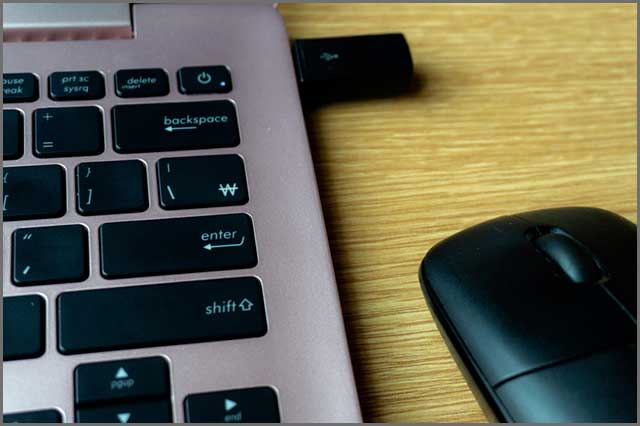 Bluetooth circuit board
Bluetooth circuit board
Bluetooth Module
The best way to integrate Bluetooth functionality into a device is by using Bluetooth modules.
The use of a Bluetooth module makes the designing job easy and can lower your certification expenses.
It comes with an increased production cost but can be economical when you are dealing with large-scale manufacturing.
You will be able to find a different type of Bluetooth module in the market.
One common example is the HC 05 Bluetooth Serial Port Protocol (SPP) module, which can set up a clear wireless connection.
It supports Bluetooth 2.0 and can carry out the transfer of data at 2.4 GHz with modulation of 3 Mbps.
It comes with a single-chip Bluetooth system and features CMOS technology with an Adaptive Frequency Hopping Feature.
lso has a minimal footprint of 12.7 mm x 27 mm.
What Is the Difference Between a Bluetooth Module and a SOC?
Bluetooth modules are standalone, self-contained hardware components that house the circuit, protocols, and components needed for wireless Bluetooth communication.
But SOCs (System-on-Chips) are complete ICs that house all the components of an electronic system on a single piece of silicon.
Bluetooth modules typically consist of a microcontroller, a transceiver for wireless radio frequency signals, and an antenna.
It also has other supporting hardware, such as a crystal oscillator for generating clock signals, memory chips, and a voltage regulator.
This hardware integrates easily with electronic devices to provide Bluetooth communication capabilities.
For instance, Bluetooth SOCs are complete ICs with Bluetooth functionality integrated into a single silicon chip package, which forms a Bluetooth PCB.
You can easily extend your serial interface wirelessly using the Bluetooth module.
The computer or laptop connected to the module acts as if it is just using one of the serial ports through the exchange is carried out over the wireless Bluetooth link.
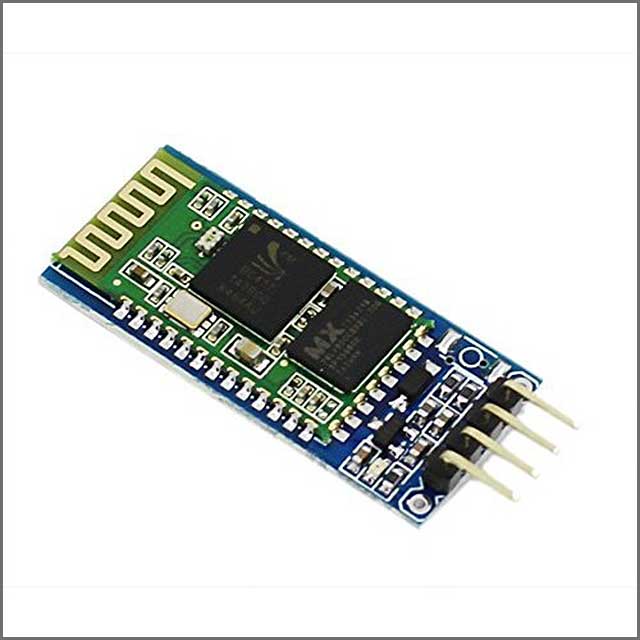 Bluetooth circuit board
Bluetooth circuit board
Generally, Bluetooth modules are the hardware that has a Bluetooth circuit board and enables wireless devices to work with a laptop or computer. Some of them also come with USB connectivity so that you can directly plug them into your networks. You can also purchase Bluetooth modules and connect them with motherboards to cable and broadcast through a Bluetooth frequency.
The Bluetooth technology has different levels of classes that determine the range of the Bluetooth modules. The version number of the model also represents the functionality range, such as power consumption and range.
Bluetooth modules can also be found in various Bluetooth-enabled devices such as custom speakers and cell phones. It can be used in place of a microcontroller to allow a tool to use Bluetooth capabilities.
Now the time has come to take a closer look at different types of Bluetooth circuit boards. We will cover Bluetooth speaker circuit boards, Bluetooth transmitter circuit boards, and Bluetooth receiver circuits boards in the following chapters.
Bluetooth Speaker Circuit Board
It has become an everyday phenomenon to encounter people playing music on their Bluetooth speakers, and the chances are that you even own one to play your favorite tracks. Bluetooth speakers work on the same principles of Bluetooth by connecting with your smartphone or audio device to play music.
We will look at the Bluetooth speaker circuit board, which can be found inside the speaker. It is placed on the main circuit board, which controls all the functions of the Bluetooth speaker.
You will have to open the speaker to get access to the Bluetooth circuit board. The circuit board contains different segments dedicated to Bluetooth, audio amplification, voltage balancing, and battery charging.
On the backside of the circuit board, you can find the volume adjustments buttons, play control buttons, and a microphone to make voice calls. You will also find the speakers, battery, and a secondary circuit board, which supplies USB power, power buttons, and LEDs.
The Bluetooth speaker circuit board is one of the most significant parts of the main circuit board.
The Bluetooth circuit board comes with an IC, which makes up the Bluetooth system of the board.
The IC can be used for any wireless audio component, as is the case with a Bluetooth speaker. You can find the Bluetooth module, which can support various functions such as Bluetooth 4.0, line-in audio, wireless stereo audio, and so on. The IC can even come with lithium battery chargers or voltage regulators in some cases, depending on the purpose.
Bluetooth module paired with EEPROM, having a frequency of 128 Kbit. The EEPROM can use a two-wire serial interface to exchange information with the Bluetooth module, which stores the settings and knowledge.
Another significant part of the Bluetooth speaker circuit board is the antennae. Depending on the circuit board, you might find a trace antenna. Data is sent and received using this antenna on the Bluetooth circuit board.
The antenna can feature two inductors, such as L4 and L6, which can optimize the performance through fine-tuning it.
Now you have got an idea about the Bluetooth speaker circuit boards. Next, we will discuss the components of the Bluetooth transmitter circuit board in the next chapter.
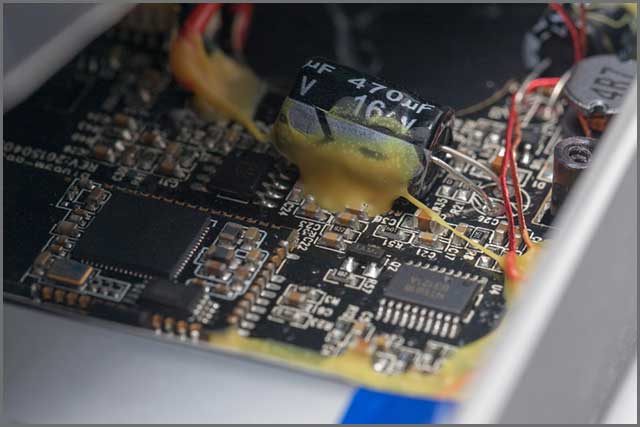
Special Offer: Get $100 off your order!
Email [email protected] to get started!
Bluetooth Transmitter Circuit Board
Bluetooth is about sending and receiving radio signals between devices. When you listen to music on your Bluetooth speaker, it receives the audio from the phone, which comes through the Bluetooth transmitter circuit board.
The Bluetooth transmitter circuit board covers the sensor data to the wireless transmission for your convenience. The board also comes with a recyclable battery and charging system for it to function.
The Bluetooth transmitter circuit board has three significant components- regulated voltage, sensor data, and wireless transmission. The regulated voltage is responsible for supplying power to the sensor circuit, Bluetooth transmitter, and microcontroller. It has to do with the electrical functions only.
The sensor data is the data that flows into the Bluetooth transmitter and can have values of 1,2,3, or 4. It depends on the sensor, which is hit and consequently travels to the Bluetooth transmitter.
The last component of wireless transmission is a combination of electrical and programming functions.
It transmits the Bluetooth protocols through the airwaves to the intended device.
The Bluetooth transmitter is also responsible for establishing connections with other nearby devices. You may find LED indicators on the Bluetooth circuit board, which reveals the status of your device. The transmitter can connect to the available tools as soon as they are powered on.
The circuit is engineered to stay on standby mode until a signal is delivered to the transmitter. The recyclable battery used in the wire should handle long hours of operation to have no interruptions in the service.
Many devices use lithium-ion batteries for the purpose, as they can give extended hours of operation. A lithium-ion battery may be able to last 10 hours on a single charge. Another small circuit board in the cell ensures that the battery is not overcharged or over-discharged. The circuit also protects the battery from being short-circuited.
The Bluetooth transmitter circuit board contains options for battery charging, voltage regulation, audio amplification, and Bluetooth. The other functions of the speaker are carried out by the different parts of the main circuit board.
The Bluetooth transmitter also comes with play and volume control buttons to give you control over your music.
We have covered the Bluetooth transmitter circuit board in detail. Let us now explore the Bluetooth receiver circuit board in our next chapter.
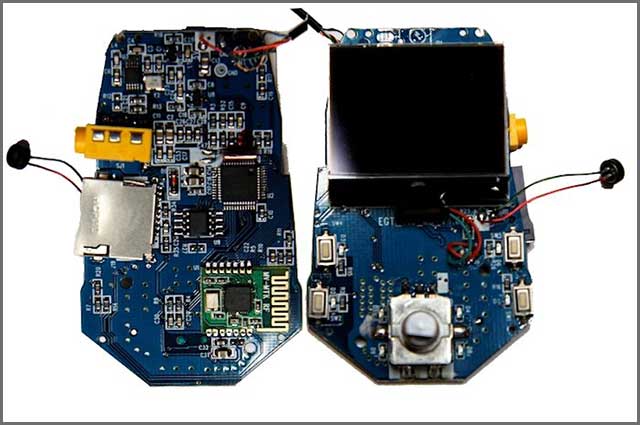
Bluetooth Receiver Circuit Board
You can use a Bluetooth receiver to stream a signal from a Bluetooth-enabled device and transmit it to some other method. For example, you can use a Bluetooth receiver to get the message from your smartphone and connect it to the aux input of your stereo to listen to your favorite tracks.
You will find the Bluetooth receiver circuit box inside the device, which controls the functions. It comes with a rechargeable battery that needs to be changed from time to time. Most of the tools use a lithium-ion battery to perform for more extended hours on a single charge.
The battery can come with its circuit board, ensuring that you don't end up overcharging or over-discharging the battery. The circuit also helps to prevent any incidents of the short course.
Some circuit boards also have USB charging options for convenience.
You will have to use a USB cable for this purpose.
The Bluetooth receiver circuit board will have an antenna used to receive the signal from your smartphone or Bluetooth device. The circuit board is similar to the Bluetooth speaker circuit board and comes with an IC, which makes up for the Bluetooth system.
You can also find aux output on the circuit board, which can hook it up to amplifiers or audio systems. The circuit board also has options for sound amplification and voltage regulation, which are required for the device's proper functioning.
You can easily purchase a Bluetooth receiver from the local shop or use a Bluetooth receiver circuit board to make your receiver. The Bluetooth receiver can also have other components depending on your purpose.
Sometimes it may be used for measurement and can come with accelerometers and sensors to measure humidity and temperature.
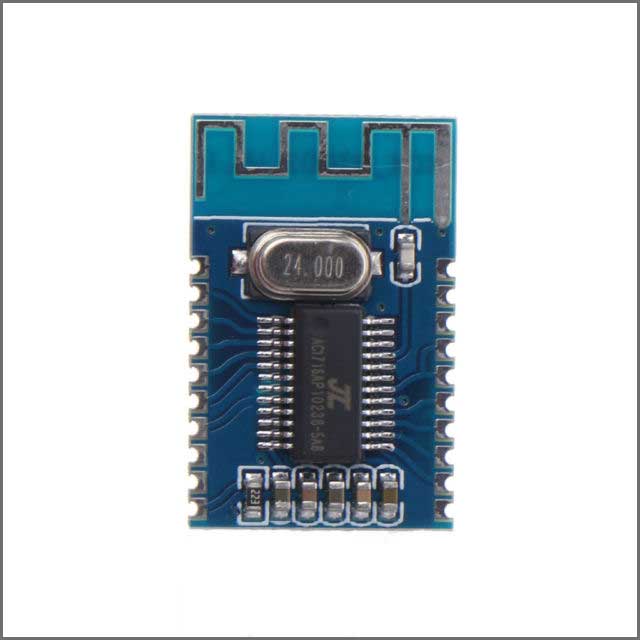
How To Design a Bluetooth Circuit Board?
This process begins with the requirements definition.
Define your Requirements
When defining your project’s requirements, consider factors like the lowest data transmission speed, form factor, power consumption, wireless range, and power consumption, especially if running the system using a battery.
Pick the Bluetooth Module
Even though you’ve already defined your project’s requirements, you have to pick the module while considering factors like the Bluetooth version, output power, Bluetooth profile, and antenna design. Ultimately, the module should fit into your development environment.

An up-close image of a Bluetooth microcontroller
Determine the Board’s Specifications
With the module in place, the next step is to develop the PCB design. But first, you have to determine the PCB’s specifications based on the wireless module. Think of factors like form factor, number of layers, substrate material, impedance control, etc.
Design the Schematic
Develop the schematic diagram to highlight the connections and functions of the board components. In this schematic diagram, place the module, interfaces, power management parts, and all other components to visualize the circuit structure.
Design the Board Layout
When designing the layout, position the components accurately to enhance signal integrity, power distribution, heat evacuation, and other performance-improving factors.
The best way to go about this process is to follow the industry practices for routing, part placement, impedance mismatch, EMI or noise, etc.

A mini wireless Bluetooth module for mobile devices
Design the Power and Ground Planes
Once you lay out the signal lines, design the power and ground planes in such a manner that they minimize noise.
Usually, the ground planes cover complete layers. But if the board has analog and digital components, separate their ground planes, then connect them at one low-impedance region.
Incorporate EMI and Signal Integrity
The PCB will most likely have high-speed transmission lines which you should ensure they have the required width and spacing to prevent interference. On the other hand, IC power pins should have decoupling and bypass capacitors to maintain the signal level.
Design the Antenna
Bluetooth antennas can be chip-based, embedded, or external. Consider the type based on these three factors and the installation location.
Test and Validate the Design
Test the Bluetooth PCB after assembly to validate its design. Conduct functionality testing by checking variables like the wireless range and data transfer speeds.
Comply With the Industry Standards and Regulations
The last step is to ensure the PCB meets the industry standards and regulations before releasing the product into the market.
How Do You Make a Bluetooth Receiver Circuit?
Instead of beginning this project from scratch, we’ll convert a Bluetooth speaker to a receiver.
With this setup, you can connect your phone to the receiver wirelessly, then link this receiver to your home theater or large speakers via an aux cable.
This allows you to walk around with your phone in your pocket without having to worry about wires when playing music. But you must be within range.

A Bluetooth speaker with a smartphone next to it
You will need the following items to complete the conversion.
- Old functional Bluetooth speaker. It can be a new one if you don’t mind repurposing it.
- Screwdriver
- Soldering iron
- Electrical wires
- Tin solder
- Wire cutter and stripper
Step 1: Dismantle the Speaker
Disassemble the Bluetooth speaker by removing the screws that hold it together. Check the circuit inside, looking for a Bluetooth module, which is usually blue in color. Once you find it, look for the main chip on the module to Google its pinout.

The circuit board of a mini Bluetooth speaker
Step 2: Disconnect the Input Aux Audio Jack
When you find the IC’s pinout diagram, locate the aux pins where the audio goes into the speaker to substitute Bluetooth connectivity.
Step 3: Connect the Aux Jack to the Bluetooth Module’s Output Pins
Cut these aux jack-to-chip connections. Look for the copper tracks on the PCB and disconnect them.
Next, solder wires to the audio jack to create an out-of-PCB connection to the Bluetooth module’s output pins.
Depending on the module, you might have to connect them to the chip’s op-amp output, where you’ll get the highest-quality sound output.
Step 4: Test the System
Reassemble the speaker and connect it to your sound system using an aux cable. Link your phone to the speaker’s Bluetooth module and play music on your phone.
Conclusion
You have to maintain professional standards while assembling Bluetooth circuit boards; otherwise, the functionalities, range, and other features will suffer.
You can get your Bluetooth PCB collected by us and enjoy the service of a trusted and experienced partner who has been in the business for many years.
And you can get in touch with us for high-quality Bluetooth PCBs made according to your strict specifications.
We also deal in bulk orders and can provide you with a cost-effective means to grow your business.
Special Offer: Get $100 off your order!
Email [email protected] to get started!





